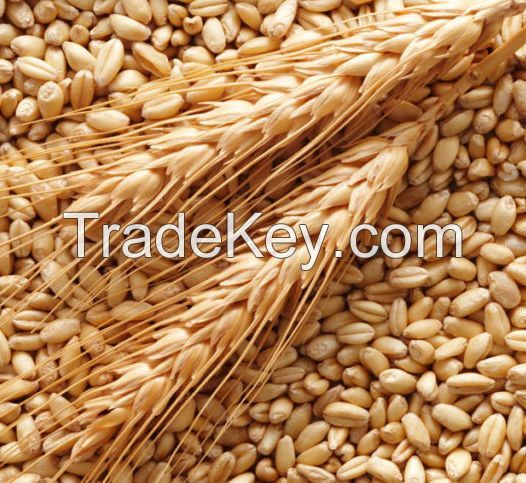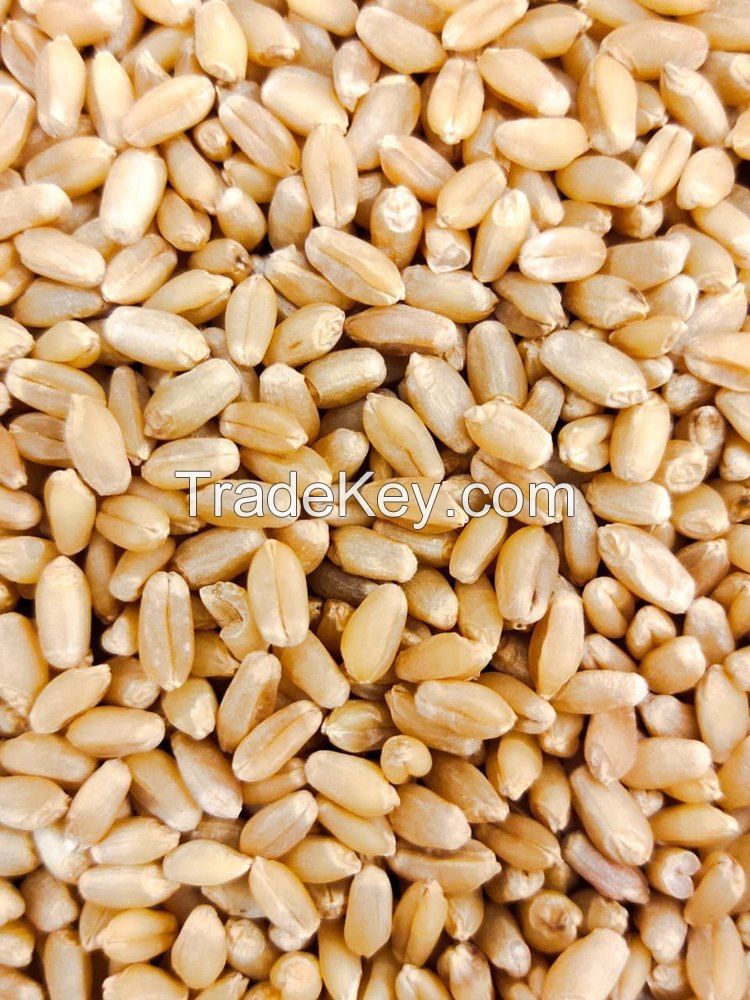It is denser and has a higher photosynthetic rate than other
leaves, to supply carbohydrate to the developing ear.
In temperate countries the flag leaf, along with the second and
third highest leaf on the plant,
supply the majority of carbohydrate in the grain and their
condition is paramount to yield formation.
Wheat is unusual among plants in having more stomata on the upper
(adaxial) side of the leaf,
than on the under (abaxial) side.
It has been theorised that this might be an effect of it having
been domesticated
and cultivated longer than any other plant.
Winter wheat generally produces up to *5 leaves per shoot and
spring wheat up to 9
and winter crops may have up to *5 tillers (shoots) per plant
(depending on cultivar).
Wheat roots are among the deepest of arable crops, extending as
far down as 2 metres (6 ft 7 in).
While the roots of a wheat plant are growing, the plant also
accumulates an energy store in its stem,
in the form of fructans, which helps the plant to yield under
drought and disease pressure,
but it has been observed that there is a trade-off between root
growth and stem non-structural carbohydrate reserves.
while stem non-structural carbohydrate is prioritised in
varieties developed for countries where disease is a bigger
issue.
Depending on variety, wheat may be awned or not awned. Producing
awns incurs a cost in grain number,
but wheat awns photosynthesise more efficiently than their leaves
with regards to water usage,
so awns are much more frequent in varieties of wheat grown in hot
drought-prone countries,
For this reason, awned varieties could become more widely grown
due to climate change.
In Europe, however, a decline in climate resilience of wheat has
been observed.
It is denser and has a higher photosynthetic rate than other
leaves, to supply carbohydrate to the developing ear.
In temperate countries the flag leaf, along with the second and
third highest leaf on the plant,
supply the majority of carbohydrate in the grain and their
condition is paramount to yield formation.
Wheat is unusual among plants in having more stomata on the
upper (adaxial) side of the leaf,
than on the under (abaxial) side.
It has been theorised that this might be an effect of it having
been domesticated
and cultivated longer than any other plant.
Winter wheat generally produces up to *5 leaves per shoot and
spring wheat up to 9
and winter crops may have up to *5 tillers (shoots) per plant
(depending on cultivar).
Wheat roots are among the deepest of arable crops, extending as
far down as 2 metres (6 ft 7 in).
While the roots of a wheat plant are growing, the plant also
accumulates an energy store in its stem,
in the form of fructans, which helps the plant to yield under
drought and disease pressure,
but it has been observed that there is a trade-off between root
growth and stem non-structural carbohydrate reserves.
Root growth is likely to be prioritised in drought-adapted
crops,
while stem non-structural carbohydrate is prioritised in
varieties developed for countries where disease is a bigger
issue.
Depending on variety, wheat may be awned or not awned.
Producing awns incurs a cost in grain number,
but wheat awns photosynthesise more efficiently than their
leaves with regards to water usage,
so awns are much more frequent in varieties of wheat grown in
hot drought-prone countries,
than those generally seen in temperate countries.
For this reason, awned varieties could become more widely grown
due to climate change.
In Europe, however, a decline in climate resilience of wheat
has been observed.
It is denser and has a higher photosynthetic rate than other
leaves, to supply carbohydrate to the developing ear.
In temperate countries the flag leaf, along with the second
and third highest leaf on the plant,
supply the majority of carbohydrate in the grain and their
condition is paramount to yield formation.
Wheat is unusual among plants in having more stomata on the
upper (adaxial) side of the leaf,
than on the under (abaxial) side.
It has been theorised that this might be an effect of it
having been domesticated
and cultivated longer than any other plant.
Winter wheat generally produces up to *5 leaves per shoot and
spring wheat up to 9
and winter crops may have up to *5 tillers (shoots) per plant
(depending on cultivar).
Wheat roots are among the deepest of arable crops, extending
as far down as 2 metres (6 ft 7 in).
While the roots of a wheat plant are growing, the plant also
accumulates an energy store in its stem,
in the form of fructans, which helps the plant to yield under
drought and disease pressure,
but it has been observed that there is a trade-off between
root growth and stem non-structural carbohydrate
reserves.
Root growth is likely to be prioritised in drought-adapted
crops,
while stem non-structural carbohydrate is prioritised in
varieties developed for countries where disease is a bigger
issue.
Depending on variety, wheat may be awned or not awned.
Producing awns incurs a cost in grain number,
but wheat awns photosynthesise more efficiently than their
leaves with regards to water usage,
so awns are much more frequent in varieties of wheat grown in
hot drought-prone countries,
than those generally seen in temperate countries.
For this reason, awned varieties could become more widely
grown due to climate change.
In Europe, however, a decline in climate resilience of wheat
has been observed.





